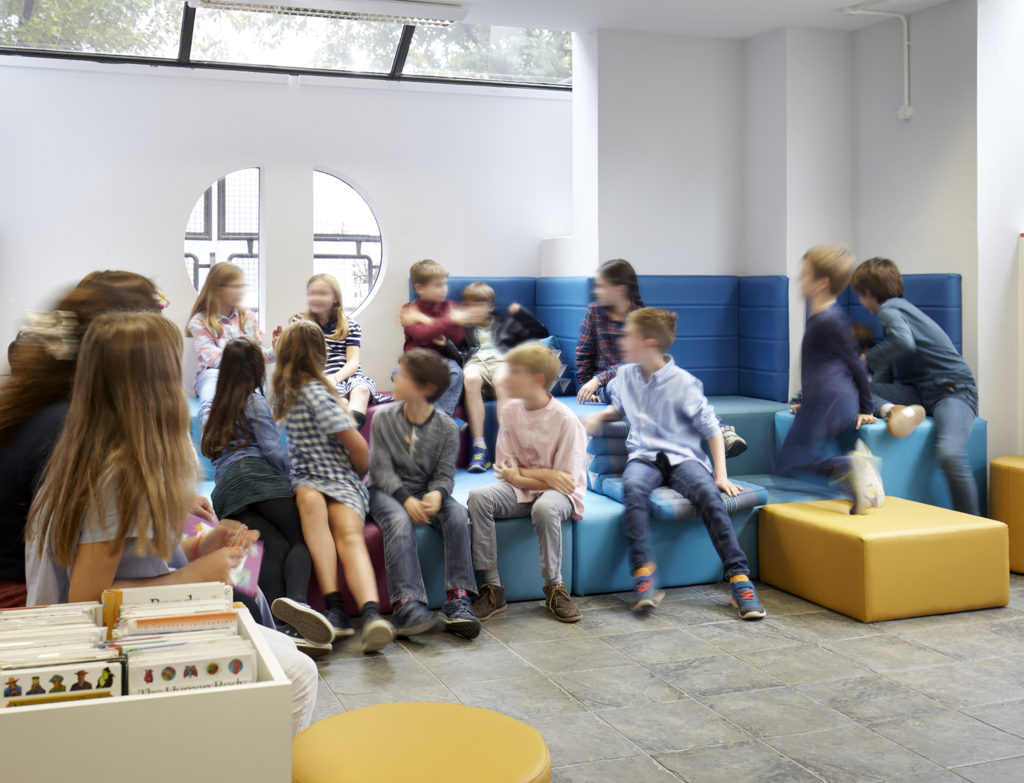Space within classrooms is very often at a premium. In a quest to provide flexibility and a variety of learning opportunities, the good old-fashioned book corner is quickly becoming an outdated fixture in the modern classroom. The introduction of all things digital is pushing the printed text to the side-lines, and reading standards are suffering. The process of reading has always been so much more than simply decoding phonetic patterns. A true love of reading comes from appreciating the experience of tackling a text. And with this in mind, we take a look at some inspirational ideas that look to nurture and restore a passion for not just reading, but books themselves.
1. Cool.
Quirky. Engaging.First impressions count, in particular the first impressions of impulsive young minds. Children will take a matter of seconds to decide if they’re going to entertain or dismiss any new addition to the classroom, so it’s important to draw them in with an initial ‘wow factor’. The reaction to any new space should be audible. Know your audience and appeal to their needs.Reading is often (wrongly) referred to as drab, so it’s important that any reading area dispels this myth. Come up with a ‘hook’ to guarantee a buy-in from the children. This ‘Starbooks Café’ below is asan example of how to dress up a traditional book corner with a modern and engaging twist. Combine the Starbooks décor with a café style loyalty card system, encouraging children to collect stamps for every book they read, and reading engagement is sure to improve.
2. Mystery. Intrigue. Suspense… even before turning a pageIn order to add an extra level of mystery to the process of reading, consider how to present collections of books in imaginative ways. A simple yet effective method of adding intrigue tothe selection of a new book is to wrap a variety of texts in brown paper. And try adorning the wrapped tome with a few key words or clues to entice readers in, reinventing the practice of selecting a story and broadening the range and depth of texts read by the whole class.
3. Creative
Through experience and necessity, teachers develop skills of enormous creativity. Consider how any topics or themes can form a starting point for the revolution of the book corner and reading area. And don’t just limit the creativity to decoration and wall displays. Think about how lighting and flooring can be incorporated and transformed to enhance the ambience of this zone, clearly distinguishing it and setting it aside from other spaces within the classroom. Renovation needn’t be expensive, children appreciate the smallest additions, simply adding a few colourful cushions can enhance the usability and enjoyment of a previously unloved area.
4. Simple. Current. Contemporary.
The key to maximising the footfall of a reading area is keeping it fresh. As soon as children think they have exhausted the limitations of a space, it becomes irrelevant and of little interest. To keep the reading corner fresh and contemporary, have a regular rotation system for the titles and texts on offer. Don’t allow the shelves to become overrun with books, carefully select titles suitable for a topic, time of year, or pertinent celebration. Keep the children excited by what they might find day
to day. And don’t be limited to printed pages. A successful book corner integrates artefacts and objects to complement the provided reading materials.5. Functional. Intuitive. Accessible. Tidy.Whilst the ‘wow factor’ is necessary to obtain a whole class curiosity towards the book corner, it mustn’t be to the detriment of practicality. For a reading area to have longevity and genuine impact on the quality of reading provision, it must be a workable and useable space. Fundamentally, the books should be accessible. To encourage sustained reading the seating shouldbe comfortable and clean. And the area should be easy for children to navigate. The importance of carefully selected furniture can be the difference between an environment that is used daily to its full potential, and one which is observed from afar, but rarely enjoyed. To truly personalise a space, bespoke furniture is a worthy investment, for example, these reading nooks below are the perfect place to become immersed in a good story.Speak to Envoplan for assistance with creating your inspirational reading nooks



